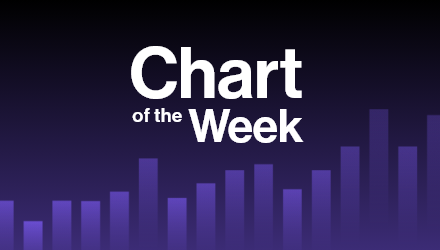In the past six months, I’ve written several dozen articles focused on commodities, equity, and fixed income investment opportunities using ETFs. The focus has been to spotlight an investment approach and discuss some of the choices advisors have in the hopes that they make informed decisions. But in reviewing results of a recent webcast poll conducted by VettaFi, I was reminded that even advisors that regularly read or listen to ETF commentary from us are building portfolios for clients with much more than ETFs.
Indeed, four in 10 of those advisors that responded had less than 30% invested in ETFs, with nearly one in 10 holding less than 10% in the products. An additional three in 10 had between 30% and 50% of their portfolios tied to ETFs, while fewer than one in 10 were power users of ETFs and investing more than 80% in ETFs. Quite simply, ETFs are being used in support of individual securities and mutual funds.
 For many advisors, index-based ETFs can serve as the core of the portfolio by providing broad exposure to an asset class or investment style for a modest fee, while they use actively managed mutual funds to cover the rest. For example, the Vanguard S&P 500 ETF (VOO) and the iShares Core MSCI EAFE ETF (IEFA) could be used together to build a global equity allocation along with fixed income mutual funds. While some advisors have gained comfort with index-based equity ETFs, they still see a benefit to active management within fixed income.
For many advisors, index-based ETFs can serve as the core of the portfolio by providing broad exposure to an asset class or investment style for a modest fee, while they use actively managed mutual funds to cover the rest. For example, the Vanguard S&P 500 ETF (VOO) and the iShares Core MSCI EAFE ETF (IEFA) could be used together to build a global equity allocation along with fixed income mutual funds. While some advisors have gained comfort with index-based equity ETFs, they still see a benefit to active management within fixed income.
Meanwhile, advisors are also using ETFs to add diversification to a portfolio filled with individual securities. For example, owning high yield corporate or emerging market bonds directly means taking on significant credit and issuer risk compared to owning the Xtrackers USD High Yield Corporate Bond ETF (HYLB), the Invesco Emerging Markets Sovereign Debt ETF (PCY), and others. These ETFs can be held along with Treasuries and a handful of corporate bonds to provide clients with a diverse fixed income allocation, benefiting from the ETFs’ liquidity.
Other advisors might be looking to ETFs in this rising rate environment to provide some of the characteristics traditionally associated with bonds, namely downside protection or income generation. ETFs like the Innovator U.S. Equity Power Buffer ETF (PSEP) and the JPMorgan Equity Premium Income (JEPI) can be used with individual stocks and provide some diversification.
Similarly, advisors might own a basket of stocks but prefer to combine them with sector or thematic ETFs. For example, rather than trying to choose among the stocks in a small, defensive sector like consumer staples or real estate, advisors can own, for instance, the Consumer Staples Select Sector SPDR (XLP) or the Vanguard Real Estate ETF (VNQ) in a portfolio with direct stakes in dividend-paying cyclical companies like Apple, JPMorgan, and Home Depot.
For those with a more long-term approach, thematic ETFs like the ARK Genomic Revolution ETF (ARKG), the Global X US Infrastructure Development ETF (PAVE), and the iShares Global Clean Energy ETF (ICLN) can offer better risk controls than trying to spot one or two potential winners in the theme and getting the picks wrong. When used, thematic ETFs often comprise a small slice of the portfolio and can easily be combined with individual securities and mutual funds.
There are now 3,000 ETFs trading in the U.S., even though the majority of assets are invested in a small number of these products. Advisors have a variety of use cases for ETFs; some are listed above, but there are many others. ETFs offer many advantages with an ability to provide diversified exposure in a relatively low-cost, liquid, and tax-efficient manner. Yet, ETFs represent a minority of the assets in many advisors’ portfolios.
For more news, information, and strategy, visit the Global Diversification Channel.

